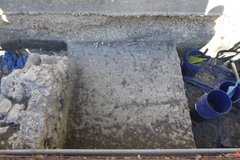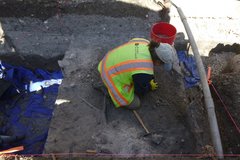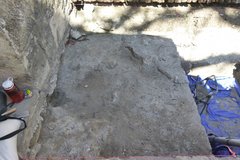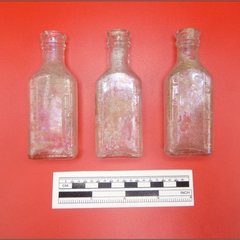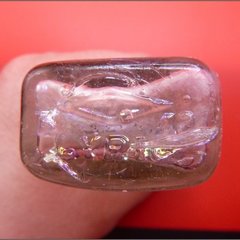Due to severe weather, archaeologists were only active for three and half days. Excavations continued in EUs 2, 4, and 6.
In EU-2, archaeologists reached an approximate depth of one meter below surface. No new features were encountered, but a previously identified surface from adjacent EU-1 was found to extend into EU-2. Archaeologists also began to reach the bottom of the builders’ trench associated with the perimeter wall. Artifact density is also beginning to lower.
Archaeologists in EU-4 continued excavating through a soft ashy deposit that was an extension of what was previously encountered in the adjacent EU-5. A lot of charcoal was observed and recovered. A patchy plaster surface was also identified in the southern portion of the unit; it does not extend across the unit. Archaeologists reached a depth of 70 cm below surface. Artifacts from this unit include ceramics, lithics, and metal.
In EU-6 archaeologists reached a depth of 50 cm below surface. The western half of this unit consists of construction fill from the old sidewalk that was at this location. As a result, soils have a high sand percentage. Archaeologists observed an increase in charcoal at around 48 cm below surface. Artifacts included ceramics, lithics, metal, and two complete glass bottles.

